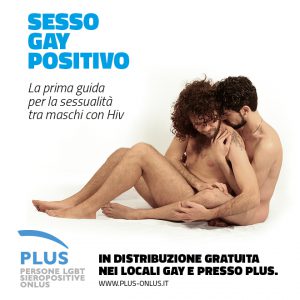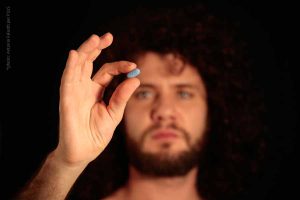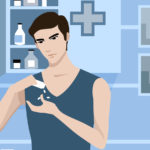Come un temporale estivo, un bel giorno mi sono arrivati nella posta elettronica gli inviti per due incontri internazionali, a Londra, il 7 e l’8 di Aprile (rispettivamente EMEA HIV Community Advisory Board ed EAME Community co-infection Advisory Board, organizzati e finanziati da GILEAD).
Senza rifletterci su un solo istante, ho accettato di partecipare.
Ho creduto che fosse importante per Plus essere presente in un simile contesto internazionale, anche se mi sono a lungo domandato quanto io -giovane attivista con così poca esperienza alle spalle- potessi essere all’altezza della situazione.
Ho cercato di non pensarci troppo e sono partito, ma soprattutto mi sono ripetuto che sarebbe stata un’ottima occasione per imparare molte cose nuove e confrontarmi con altre realtà.
Entrambi gli incontri sono stati infatti popolati da attivisti ed esperti provenienti da molti paesi d’ Europa: Francia, Belgio, Germania, Paesi Bassi, Portogallo, Spagna, Regno Unito, Turchia, Grecia, Polonia, Svizzera.
La cosa più sorprendente è stata la rapidità con cui abbiamo individuato una serie di problematiche comuni alla maggior parte delle comunità di persone con HIV in Europa, prima fra tutte l’assoluta urgenza di elaborare strategie di comunicazione più efficaci e ideate per adattarsi sempre meglio ad esigenze specifiche di gruppi diversi (è un po’ la sfida che noi di Plus abbiamo raccolto pubblicando l’opuscolo Sesso Gay Positivo).
È urgente, fondamentale direi, che tale comunicazione relativa ad HIV sappia essere meno medica, più vicina all’umano, alla persona. Una comunicazione che metta in luce il punto di vista della persona sieropositiva nella sua interezza, restituendoci fedelmente le sue difficoltà a inserirsi nel contesto sociale, ad affrontare la disclosure, a vivere al riparo dallo stigma e dalle discriminazioni sia sul piano affettivo/relazionale, che in contesti lavorativi e di comunità di appartenenza.
più vicina all’umano, alla persona. Una comunicazione che metta in luce il punto di vista della persona sieropositiva nella sua interezza, restituendoci fedelmente le sue difficoltà a inserirsi nel contesto sociale, ad affrontare la disclosure, a vivere al riparo dallo stigma e dalle discriminazioni sia sul piano affettivo/relazionale, che in contesti lavorativi e di comunità di appartenenza.
HIV è un problema che riguarda tutti, come è noto. Tuttavia, è altrettanto noto che gli MSM (maschi che fanno sesso con maschi) sono il gruppo esposto più colpito in Europa; un gruppo nel quale il numero delle nuove infezioni resta piuttosto alto in confronto alle cifre relative alla popolazione generale. O, ancora, come ha ribadito più volte Marion Wadibia (Naz Project London): molte delle nuove infezioni nel Regno Unito riguardano persone nate all’estero, appartenenti a comunità di colore o ispaniche.
È dunque chiaro che abbiamo bisogno di ripensare a degli strumenti di informazione e prevenzione generali, ma anche e soprattutto a dei linguaggi specifici che raggiungano le cosiddette popolazioni maggiormente a rischio in modo diretto ed efficace, generando una consapevolezza individuale che possa portare non solo ad una migliore capacità di fare prevenzione, ma anche ad un percorso più cosciente nella gestione del vivere quotidiano con HIV.
Un altro tema scottante è stato, infatti, quello dell’accesso alle terapie: un problema multisfaccettato. Da un lato la drammatica presenza di Late Presenters (coloro che scoprono tardivamente di avere l’ HIV, già nella fase avanzata dell’infezione o, comunque, dopo aver vissuto inconsapevolmente con HIV per molto tempo), dall’altro il sempreverde dilemma: quando iniziare la terapia? Cosa dicono le linee guida?
In merito mi sento di dire che il problema sembra essere anche italiano, come dimostrato dalle testimonianze mia e di Diego Pezzotti (ANLAIDS Lombardia). Le linee guida parlano molto chiaro e mettono in evidenza una serie di condizioni specifiche considerate sufficienti a valutare concretamente l’ipotesi di intraprendere il percorso della terapia.
 Nel nostro Paese, però, le discrepanze fra linee guida e mondo reale sono tante, profonde e soprattutto variegate: le unità sanitarie locali hanno le loro dinamiche interne, così che essere sieropositivo a Bologna, non è uguale ad esserlo a Brindisi, a Roma, a Siena o a Salerno. Spesso anche all’interno della stessa regione le scuole di pensiero sull’inizio della TARV (terapia anti retrovirale), sono molto diverse e basta spostarsi da un ospedale ad un altro per ricevere un’ assistenza sanitaria di qualità radicalmente differente.
Nel nostro Paese, però, le discrepanze fra linee guida e mondo reale sono tante, profonde e soprattutto variegate: le unità sanitarie locali hanno le loro dinamiche interne, così che essere sieropositivo a Bologna, non è uguale ad esserlo a Brindisi, a Roma, a Siena o a Salerno. Spesso anche all’interno della stessa regione le scuole di pensiero sull’inizio della TARV (terapia anti retrovirale), sono molto diverse e basta spostarsi da un ospedale ad un altro per ricevere un’ assistenza sanitaria di qualità radicalmente differente.
È certo vero che l’empowerment, del singolo e delle comunità, è un obiettivo che dobbiamo continuare a perseguire noi attivisti, ma è pur vero che il paziente (ma preferisco dire “la persona che vive con HIV”) dovrebbe avere il diritto di relazionarsi con medici in grado di fornire un supporto globale all’individuo, attraverso una forma di interazione empatica, realizzando un rapporto di collaborazione che permetta di condividere scelte importanti relative alla salute e al benessere della persona. A tal fine si è parlato di cosa ci piacerebbe avere a disposizione: supporto specifico (un Peer Helper che collabori con le strutture sanitarie, ad esempio), una equipe medica strutturata per rispondere anche alle caratteristiche di certi gruppi (un medico gay, un infermiere musulmano, in generale un operatore sanitario “vicino a me”), un accesso al trattamento tempestivo e ben monitorato, maggiore facilità e rapidità nell’effettuare il test, la possibilità di accedere alla PrEP.
Relativamente alla Pre-Exposure Prophylaxis (PrEP), grazie anche allo spunto fornito dal questionario di Plus “useresti la PrEP?“presentato ad ICAR 2013 da Giulio Maria Corbelli, si è discusso della possibilità di utilizzare questo strumento anche in Europa. Da un lato il fattore economico: tutti concordi nel definire l’investimento sulla PrEP un guadagno sul lungo periodo. Infatti la prospettiva di far precipitare il numero di nuove infezioni avvalendosi di questo strumento farebbe apparire meno catastrofico l’impatto della PrEP sui SSN.
discusso della possibilità di utilizzare questo strumento anche in Europa. Da un lato il fattore economico: tutti concordi nel definire l’investimento sulla PrEP un guadagno sul lungo periodo. Infatti la prospettiva di far precipitare il numero di nuove infezioni avvalendosi di questo strumento farebbe apparire meno catastrofico l’impatto della PrEP sui SSN.
Dall’altro la difficoltà di gestire l’utilizzo di questa strategia farmacologica, di stabilire dei criteri di somministrazione e di individuare i soggetti più adatti ad usufruirne.
Le questioni messe in campo sono state tante ed è sempre più evidente che non possiamo accontentarci di modalità di informazione ferme agli anni ’90.
Il profilattico resta uno strumento fondamentale per combattere la diffusione di HIV, ma non è più l’unico.
Bisogna iniziare a rendersi conto del ruolo fondamentale della TasP nella riduzione dell’epidemia.
Bisogna che si parli sì, di profilattico, ma anche di viremia, di carica non rilevabile e della possibilità di non trasmettere il virus che essa offre, di profilassi pre e post-esposizione.
Bisogna creare una maggiore conoscenza generale, bisogna realizzare una collaborazione più stretta fra gli esperti di comunità e gli operatori sanitari.
Bisogna soprattutto ricordare ogni giorno di “combattere HIV, non persone con HIV”.
Quella contro l’HIV non è mai stata e non sarà mai una battaglia soltanto medica.
Paolo Gorgoni
Plus Onlus
English version
Europe and HIV: synergies for a possible future
Like a summer storm, one day I received the invitations for two international meetings in London on the 7th and 8th of April (respectively EMEA HIV Community Advisory Board and EAME Community co-infection Advisory Board, both organized and funded by GILEAD).
Without thinking about it for a moment, I agreed to participate.
I thought that the presence of Plus would have been important (fundamental) in a similar international context, although I have long wondered how I -young activist with so little experience – could rise to the occasion.
I tried not to think about it too much and I left, mostly repeating to myself that it would have been an excellent opportunity to learn many new things and to confront with other realities.
Both meetings were in fact attended by activists and experts from many European countries: France, Belgium, Germany, Netherlands, Portugal, Spain, UK, Turkey, Greece, Poland, Switzerland.
The most surprising thing was the speed with which we have identified a number of common issues in HIV communities all over Europe; above all the absolute urgency to develop more effective communication strategies, tailored for the specific needs of different groups (it is a bit of the challenge that we’ve collected publishing the brochure Sesso Gay Positivo- Positive Gay Sex).
It is urgent, of critical importance I would say, for this communication about HIV to be less medical and closer to the human being, to the person. A communication that highlights the point of view of the people living with HIV in their entirety, faithfully displaying their difficulties in entering the social context, to address the disclosure, to live free from stigma and discrimination both n the affective / relational field, as in the workplace and community .
HIV is a problem that affects everyone, as it is known. However, it is also known that the MSM (Men who have Sex with Men) are the most exposed group in Europe, where the number of new infections remains quite high compared to the general population. Moreover, as Marion Wadibia (Naz Project London) stated repeatedly: many of the new infections in the United Kingdom concern foreign-born individuals belonging to Black or Hispanic communities.
It is therefore clear that we need to rethink the tools of information and general prevention, but also to set specific languages , in order to reach the most-at-risk populations in a so-called direct and effective way, creating a personal awareness that will lead not only to the improvement of prevention skills, but also to a more conscious route in the management of daily living with HIV.
Another hot topic was, in fact, that of the access to treatment: a multi-faceted problem. On the one hand the dramatically high number of Late Presenters (those who discover their HIV status in an advanced stage or, those who lived with HIV for a long time unknowingly) on the other hand the evergreen dilemma: when initiating therapy? What do the guidelines suggest?
About this, I would say that the problem seems to be widespread in Italy, as witnessed by mine and Diego Pezzotti’s (ANLAIDS Lombardia) personal experiences. The guidelines speak very clearly and highlight a number of specific conditions considered sufficient to assess specifically the possibility of embarking on the path of the treatment.
In our country, however, discrepancies between guidelines and the real world are many, especially deep and diverse: the local health units have their own internal dynamics, so that being HIV positive in Bologna, is not equal to being positive in Brindisi, Rome, Siena or Salerno. Often, even within the same region schools of thought on the beginning of ART (Anti retroviral therapy), are very different and just moving from one hospital to another is enough to receive a radically different health care assistance.
It is true that the empowerment of individuals and communities is a goal that we must keep on pursuing as activists, but it is also true that the patient (but I prefer to say “the person living with HIV”) should have the right to relate with physicians able to provide comprehensive support to the individual, through a form of empathic interaction, creating a partnership that allows the sharing of important decisions related to the health and well-being of the individual. To this end, we talked about what we’d like to have at our disposal: a specific support (a Peer Helper to collaborate with health care providers, for example), a medical team structured to respond to the characteristics of certain groups (a gay doctor, a Muslim nurse, in general, a health care provider “close to me”), an access to timely and well monitored treatment, to easier and faster ways to get tested, the possibility of access to PrEP.
With regard to the Pre-Exposure Prophylaxis (PrEP), thanks to the inspiration provided by the Plus questionnaire “Useresti la PrEP?” (Would you use PrEP?) presented at ICAR 2013 by Giulio Maria Corbelli, we discussed the possibility of using this tool also in Europe. On the one hand, the economic factor: all of the participants agreed in defining the investment on PrEP as a long-term gain. In fact, the perspective of plunging the number of new infections using this tool would seem to reduce the catastrophic impact of PrEP on the National Healthcare Systems; on the other hand, the difficulty of managing the use of this medication strategies, to establish the criteria for administration and to identify the most suitable patients to use them.
The questioned issues were so many and it is becoming increasingly clear that we cannot rely on the old fashioned communication modalities of the 90s.
The condom is a key tool to fight the spread of HIV, but it is not the only one.
We must begin to realise the fundamental role of the TASP in reducing the epidemic.
We must talk about condoms, but also about viremia, undetectable viral load (Swiss statement: “ a HIV-positive individual not suffering from any other STDs -Sexual Transmission Diseases- and adhering to ART -Anti Retroviral Therapy- with a completely suppressed viremia does not transmit HIV sexually”, Bulletin des Médecins Suisses 2008) and about pre-and post-exposure prophylaxis.
We need to improve the awareness, we need to build a closer coperation between community experts and health care providers.
Above all, we should remember everyday to “fight HIV, not people with HIV”.
The battle against HIV has never been and never will be strictly medical.
Paolo Gorgoni
Plus ONLUS.





